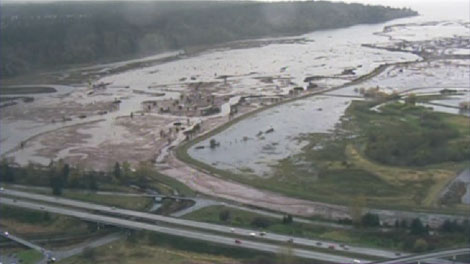NEAR OLYMPIA, Wash. -- What used to be a single, straight river mouth confined to its man-made levee path is now a wild delta spreading its fresh water fingers to touch Puget Sound.
The Nisqually Delta was restored by removing the dikes nearly five years ago. It was done to recreate a natural river and estuary, to help ease flooding problems and protect salmon.
Thursday, biologists were zipping up and down the newly-formed channels looking for signs tiny wild salmon. The Nisqually Indian Tribe group dragged nets through the channels and pulled them in by hand. Inside, they found a variety of fish including what they are looking for: salmon.
The young fish are here to build size and strength before heading out to the ocean and ultimately returning to the stream of their birth. Biologists say these studies will let them know how often the fish stay in the restored delta, how they eat and live there and how they use it when they return.


